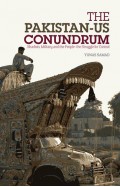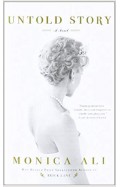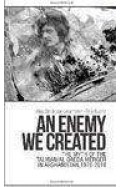Medina in Birmingham, Najaf in Brent: Inside British Islam
By: Innes Bowen
-
Rs 1,427.25
- Rs 2,595.00
- 45%
You save Rs 1,167.75.
Due to constant currency fluctuation, prices are subject to change with or without notice.
Anyone wanting to understand the profile and landscape of the new Muslim Britain should start here.'--Evening Standard
'Innes Bowen, a radio journalist who has studied British Islam for a decade, provides a readable anatomy of the [British] Muslim scene, with all its intricate subdivisions. The spirit is neither hostile to nor defensive of Islam; it offers a nuanced picture reflecting diligent investigation.'--The Economist
'...sober, meticulous and revelatory ... A start for anyone in government should be to read Medina in Birmingham, Najaf in Brent, the fruit of 80 interviews over seven years by a respected editor at the BBC.'--The Guardian
Muslim intellectuals may try to define something called British Islam, but the truth is that as the Muslim community of Britain has grown in size and religiosity, so too has the opportunity to found and run mosques which divide along ethnic and sectarian lines. Just as most churches in Britain are affiliated to one of the main Christian denominations, the vast majority of Britain's 1600 mosques are linked to wider sectarian networks: the Deobandi and Tablighi Jamaat movements with their origins in colonial India; the Salafi groups inspired by an austere form of Islam widely practiced in Saudi Arabia; the Islamist movements with links to religious political parties in the Middle East and South Asia; the Sufi movements that tend to emphasise spirituality rather than religious and political militancy; and the diverse Shi'ite sects which range from the orthodox disciples of Grand Ayatollah Sistani in Iraq to the Ismaili followers of the pragmatic and modernising Aga Khan. These affiliations are usually not apparent to outsiders, but inside Britain's Muslim communities sectarian divides are often fiercely guarded by religious leaders. This book, of which no equivalent volume yet exists, is a definitive guide to the ideological differences, organisational structures and international links of the main Islamic groups active in Britain today.
| Book | |
| What's in the Box? | 1 x Medina in Birmingham, Najaf in Brent: Inside British Islam |
Anyone wanting to understand the profile and landscape of the new Muslim Britain should start here.'--Evening Standard
'Innes Bowen, a radio journalist who has studied British Islam for a decade, provides a readable anatomy of the [British] Muslim scene, with all its intricate subdivisions. The spirit is neither hostile to nor defensive of Islam; it offers a nuanced picture reflecting diligent investigation.'--The Economist
'...sober, meticulous and revelatory ... A start for anyone in government should be to read Medina in Birmingham, Najaf in Brent, the fruit of 80 interviews over seven years by a respected editor at the BBC.'--The Guardian
Muslim intellectuals may try to define something called British Islam, but the truth is that as the Muslim community of Britain has grown in size and religiosity, so too has the opportunity to found and run mosques which divide along ethnic and sectarian lines. Just as most churches in Britain are affiliated to one of the main Christian denominations, the vast majority of Britain's 1600 mosques are linked to wider sectarian networks: the Deobandi and Tablighi Jamaat movements with their origins in colonial India; the Salafi groups inspired by an austere form of Islam widely practiced in Saudi Arabia; the Islamist movements with links to religious political parties in the Middle East and South Asia; the Sufi movements that tend to emphasise spirituality rather than religious and political militancy; and the diverse Shi'ite sects which range from the orthodox disciples of Grand Ayatollah Sistani in Iraq to the Ismaili followers of the pragmatic and modernising Aga Khan. These affiliations are usually not apparent to outsiders, but inside Britain's Muslim communities sectarian divides are often fiercely guarded by religious leaders. This book, of which no equivalent volume yet exists, is a definitive guide to the ideological differences, organisational structures and international links of the main Islamic groups active in Britain today.
Medina in Birmingham, Najaf in Brent: Inside British Islam
By: Innes Bowen
Rs 1,427.25 Rs 2,595.00 Ex Tax :Rs 1,427.25
Zubin Mehta: A Musical Journey (An Authorized Biography)
By: VOID - Bakhtiar K. Dadabhoy
Rs 472.50 Rs 1,050.00 Ex Tax :Rs 472.50
The Great Degeneration: How Institutions Decay and Economies Die
By: Niall Ferguson
Rs 906.75 Rs 1,395.00 Ex Tax :Rs 906.75
High Financier: The Lives And Time Of Siegmund Warburg
By: Niall Ferguson
Rs 1,787.50 Rs 2,750.00 Ex Tax :Rs 1,787.50
The Origins of Political Order From Prehuman Times to the French RevolutioN
By: Francis Fukuyama
Rs 3,505.50 Rs 3,895.00 Ex Tax :Rs 3,505.50
Manning Up: How the Rise of Women Has Turned Men into Boys
By: Kay Hymowitz
Rs 646.75 Rs 995.00 Ex Tax :Rs 646.75
The Obama Syndrome: Surrender At Home War Abroad
By: Tariq Ali
Rs 1,165.50 Rs 1,295.00 Ex Tax :Rs 1,165.50
The Quest For Meaning: Developing A Philosophy Of Pluralism
By: Tariq Ramadan
Rs 1,255.50 Rs 1,395.00 Ex Tax :Rs 1,255.50
The Pakistan US Conundrum Jihadists The Military And The People The Struggle For Control
By: Yunas Samad
Rs 1,255.50 Rs 1,395.00 Ex Tax :Rs 1,255.50
An Enemy We Created: The Myth Of The Taliban Al Qaeda Merger In Afghanistan 19702010
By: Alex Strick van Linschoten
Rs 3,412.50 Rs 5,250.00 Ex Tax :Rs 3,412.50
WikiLeaks: Inside Julian Assanges War on Secrecy
By: David Leigh & Luke Harding
Rs 552.50 Rs 850.00 Ex Tax :Rs 552.50
The Great Degeneration: How Institutions Decay and Economies Die
By: Niall Ferguson
Rs 906.75 Rs 1,395.00 Ex Tax :Rs 906.75
High Financier: The Lives And Time Of Siegmund Warburg
By: Niall Ferguson
Rs 1,787.50 Rs 2,750.00 Ex Tax :Rs 1,787.50
No recently viewed books available at the moment.
Zubin Mehta: A Musical Journey (An Authorized Biography)
By: VOID - Bakhtiar K. Dadabhoy
Rs 472.50 Rs 1,050.00 Ex Tax :Rs 472.50
Medina in Birmingham, Najaf in Brent: Inside British Islam
By: Innes Bowen
Rs 1,427.25 Rs 2,595.00 Ex Tax :Rs 1,427.25
The Great Degeneration: How Institutions Decay and Economies Die
By: Niall Ferguson
Rs 906.75 Rs 1,395.00 Ex Tax :Rs 906.75
High Financier: The Lives And Time Of Siegmund Warburg
By: Niall Ferguson
Rs 1,787.50 Rs 2,750.00 Ex Tax :Rs 1,787.50











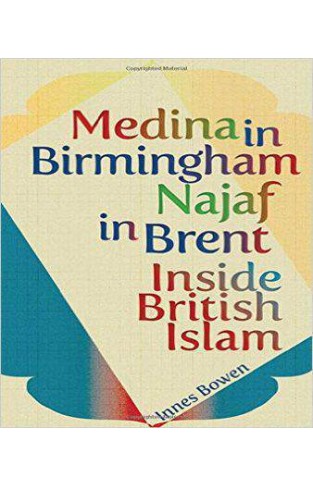
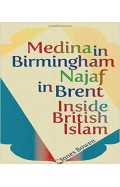
-120x187.jpg?q6)





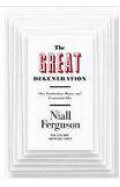
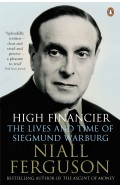
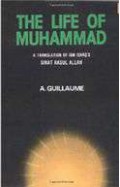
-120x187.jpg?q6)



-120x187.jpg?q6)
